Barcha boʻlimlar
News
All newsNews
Enhancing the effectiveness of anti-corruption efforts in the Fund for Financing Science and Supporting Innovations.
Information on the official business trips of the officials of the Fund for Financing Science and Supporting Innovations of the Ministry of Higher Education, Science and Innovation of the Republic of Uzbekistan.
Yosh olimlarning qisqa muddatli ilmiy stajirovkalarini moliyalashtirish (2018-2025 y)
Ilmiy laboratoriya asbob-uskunalari xaridi (2018-2025 y)
Ilmiy faoliyatga oid davlat dasturlari uchun 2022-2025 yillarda ajratilgan mablag‘lar (mlrd so‘m)
Jamg‘arma daromadlari rejasi va ijrosi (2022-2025 yy)
Scientific laboratory equipment
All equipmentHigh Performance Liquid Chromatograph
High Performance Liquid Chromatograph
High Performance Liquid Chromatograph System Four-channel modular system for pharmaceutical, quality control, environmental, food, research and development applications, offering a variety of solvents, sampling and detection capabilities. Modular design allows you to customize the device in accordance with the individual requirements and financial capabilities of the customer.
High-performance liquid chromatographs allow you to implement any method and provide more efficient separation of complex mixtures in the concentration range from nanograms to grams. The use of Poroshell and sub-2 µm columns allows HPLC users to perform both conventional HPLC and Ultra High Performance Liquid Chromatography (UHPLC).
OpenLAB ChemStation Chromatography Software is a state-of-the-art chromatograph control and data processing software.
Binary and quaternary pumps provide fast and accurate mixing of mobile phase components, ensuring stable operation of HPLC and LCMS systems.
The use of a multisampler system in the HPLC multisampler ensures that all sample injector components are flushed with three solvents and reduces carryover to 10 ppm.
Efficient temperature control and a flexible column switching system allow you to quickly switch between methods;
Modular design, easy integration into laboratory infrastructure and workflows ensure the lowest cost of analysis;
Unique radio frequency identification (RFID) keeps track of used columns, flow cells and lamps;
The leak detection system reports errors and automatically turns off the chromatograph;
The self-diagnosis and warning system (EMF) warns of the need for preventive maintenance;
Frontal access to the main units of the modules facilitates maintenance of the devices.
High performance liquid chromatograph 1-channel isocratic pump
Features: provide a flow rate from 0.001 to 10 ml / min (in increments of 0.001 ml / min); resulting pressure from 0 to 600 bar; flow reproducibility error ≤0.07% RSD; current adjustment accuracy ±1%.
Pump supplied: C18 HPLC test column, capillaries, glass tray, four 1 L bottles and connecting cables.
High performance liquid chromatograph 2-channel binary pump
Features: formation of a gradient by mixing up to 2 components of the mobile phase in the high pressure zone; the highest repeatability of the flow and mixing of the mobile phase; resulting pressure from 0 to 600 bar; Provide flow from 0.001 to 5 ml/min (0.001 ml/min increments); A 2-channel degasser was installed to remove gases from the mobile phase; flow reproducibility error ≤0.07% RSD; gradient range 0-100%; gradient composition reproducibility error <0.15% RSD; current adjustment accuracy ±1%; operating pH range from 1 to 12.5.
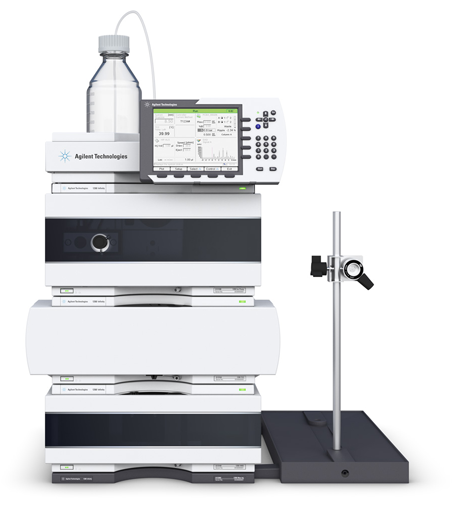

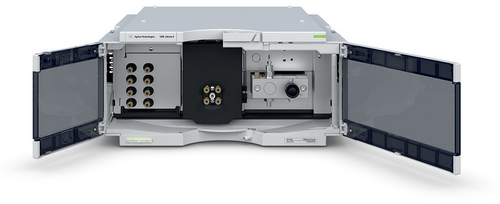

Multipurpose X-ray diffractometer
Multipurpose X-ray Diffractometer
The Universal X-ray Diffractometer is a versatile high-precision vertical goniometric X-ray diffractometer, unique in its capabilities for scientific research and analytical control in industry. Solves all problems of X-ray diffractometry.
The Empyrean X-ray Diffractometer is PANalytical's latest innovation with a system of fully calibrated optical modules capable of solving every possible X-ray diffraction problem today.
For the first time in diffraction studies, the technology of "tomographic" scanning of a sample was used, which allows "seeing" it in any plane and showing a three-dimensional projection of the internal structure of the sample.
Modular design, PreFIX platform
As in previous models of PANAlytic diffractometers, the layout of all optical modules was developed on a single PANAlytic development - the PreFIX platform (Pre-aligned Fast replaceable X-ray modules), where all modules are pre-calibrated and implemented at the factory. Does not require smoothing. Also, no configuration is required when using the modules on other Empyrean systems.
The PreFIX platform allows you to change all optical modules without exception (including primary and secondary optics) as quickly and easily as possible. Thus, powders, crystals, textures, stresses, films, surfaces, etc. can be easily measured sequentially in one diffractometer by simply changing the corresponding prefix.
There is no need to buy a new system for a new task - you just need to buy the appropriate modules. You really get a completely new diffractometer with no limits on completeness of analysis and / or sensitivity.
Brief description of the diffractometer
The diffractometer has a classic powder layout and a special modification using a large number of optical modules: parabolic and focal mirrors, Bartel monochromators, hybrid monochromators, monocapillary and polycapillary optics, triaxial oscillating optics for analysis, fixed and programmable slits, a plane-parallel collimator, etc.).
Areas of use
A single diffractometer is capable of performing all X-ray diffraction tasks:
- Classic phase analysis with the highest detection speed and accuracy;
- Determination of unit cell parameters, improvement;
- Determination of phases by layers;
- Microdiffraction;
- Texture analysis, construction of polar figures;
- Determination of stresses and sizes of crystallites;
- Analysis of thin and ultrathin films, multilayer coatings;
- Analysis of epitaxial films, higher order structures, analysis of rocking curves, construction of cross-spatial maps, assessment of the perfection of structures;
- Analysis of single crystals;
- Reflectometry, determination of thickness and density of layers;
- Analysis of nanoscale powders and materials;
- Small-Angle X-Ray Scattering SAXS (Small-Angle X-Ray Scattering), nanoparticle size distribution analysis;
- Diffraction in the plane (diffraction in the plane);
- Research under extreme processing conditions;
- Determination of phase transitions when changing the parameters of the crystalline nanostructure;
- Сluster analysis;
- Tomographic scanning, construction and display of 3D projections of the internal structure of substances (defectoscopy).
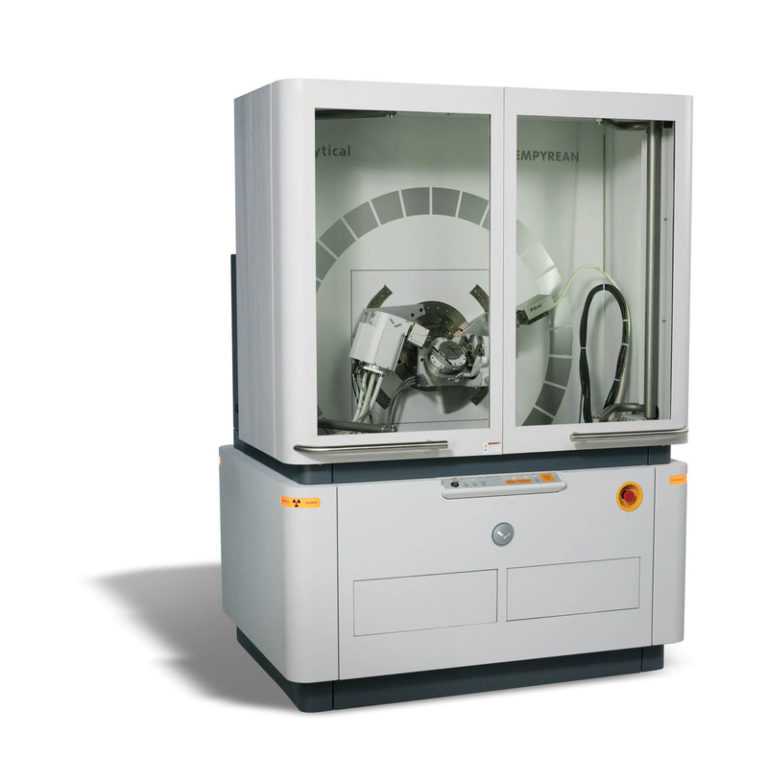

X-ray diffractometry
X-ray diffractometer
The 5th generation MiniFlex diffractometer is a multifunctional multi-purpose instrument designed for the qualitative and quantitative phase analysis of polycrystalline materials.
MiniFlex is available in two versions. The 600W MiniFlex is twice as powerful as other desktop models. This allows you to speed up the analysis and increase the overall efficiency of studies. Another MiniFlex 300 model does not need an external cooling system due to its low power (X-ray tube power 300 W). New MiniFlex features provide maximum analysis flexibility.
The new 5th generation MiniFlex diffractometer is ideal for today's rapidly evolving X-ray analysis. The diffractometer delivers speed and sensitivity with innovative technology enhancements such as the high-speed D/teX detector (optional) combined with a new 600W x-ray source. A graphite monochromator (optional) in combination with a standard scintillation counter increases sensitivity by optimizing the signal-to-background ratio. If resolution is very important, changing the slits of the incident and diffracted beams will achieve the desired resolution. Due to its high performance, the MiniFlex is the only benchtop X-ray diffractometer equipped with an automatic sample loader. For X-ray diffraction training at colleges and universities or day-to-day quality control at the factory, MiniFlex delivers productivity and better data.
Each MiniFlex diffractometer comes with the latest PDXL software. PDXL is a full featured powder diffraction data processing package from Rigaku. The latest version of PDXL includes several important new features such as the Principal Parameters method for more accurate peak positioning, automatic qualitative X-ray diffraction analysis using an open crystallographic database (COD), and a user interface for structure clarification at a glance. principles (ab initio).
Introduced to the market by Rigaku in 1973, the MiniFlex was designed to allow beginners to get the same reliable results as the experienced user with a standard multi-purpose diffractometer. The new MiniFlex diffractometer retains the features that have made it popular over the years, including a compact size and rugged design. This allows the unit to be installed in confined spaces, is easy to operate and maintain, and has a very low cost of ownership.
View:
- New 5th generation design;
- Compact radiation-resistant case;
- Alternation of slits in incident light;
- Ease of installation and user training;
- Factory calibrated goniometer;
- Works with a laptop computer.
Areas of use:
- Qualitative stage analysis;
- Quantitative stage analysis;
- Determination of the degree of crystallization;
- Determination of the size of the crystallite and the degree of distortion of the crystal lattice;
- Mesh parameters improvement;
- Improving the structure of the material according to the Rietveld method;
- Determination of the molecular structure.
Areas of use:
- Cements;
- Chemical reagents;
- Cosmetics;
- Education;
- Environment;
- Food;
- Science;
- Criminology;
- Geology and mineralogy;
- Paints and coatings;
- Petrochemistry;
- Pharmaceutical products;
- Quality control and failure analysis.
Institute of Chemistry and Physics of Polymers of the Academy of Sciences of the Republic of Uzbekistan. 100128, Tashkent. st. A. Kadiri, 76
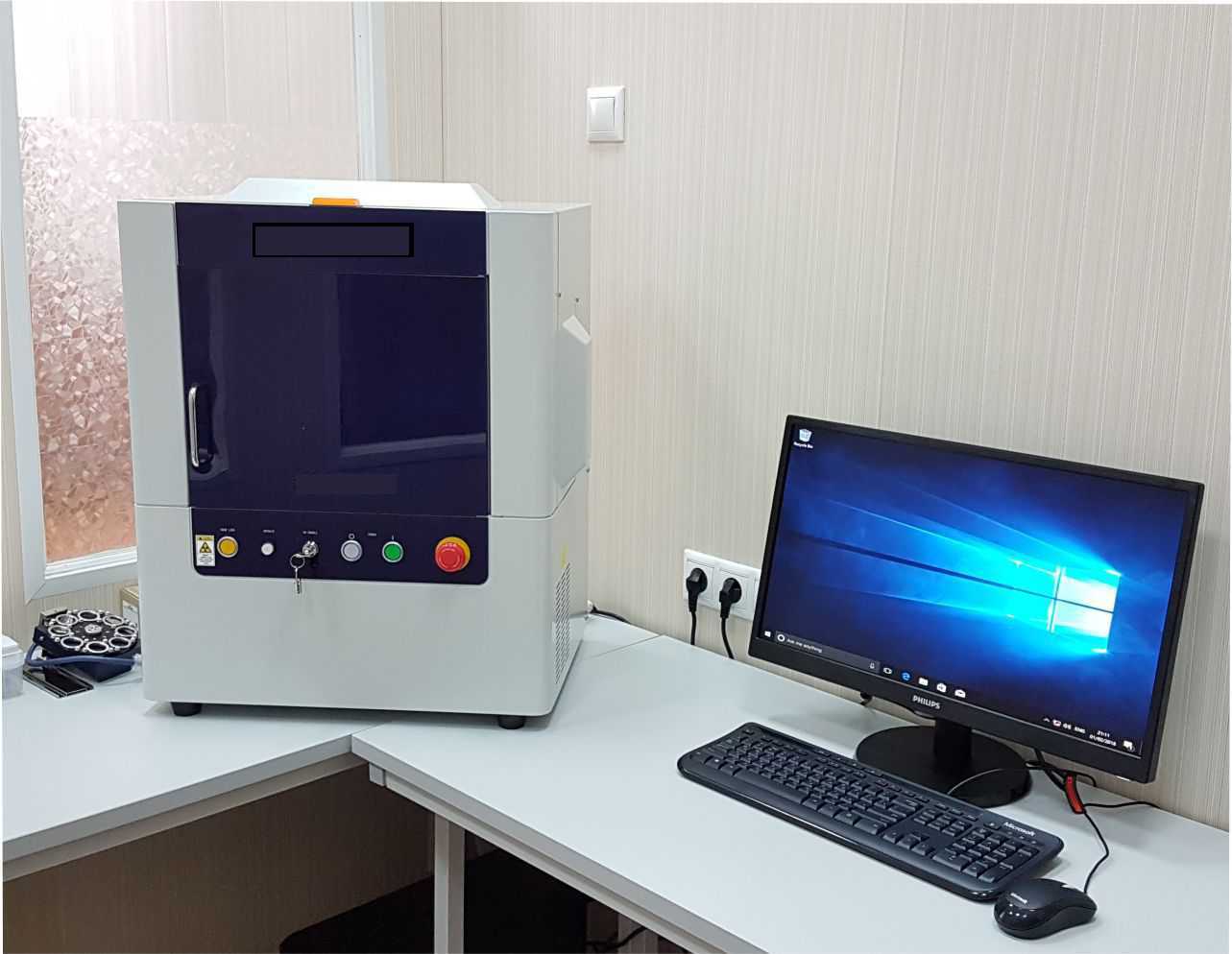

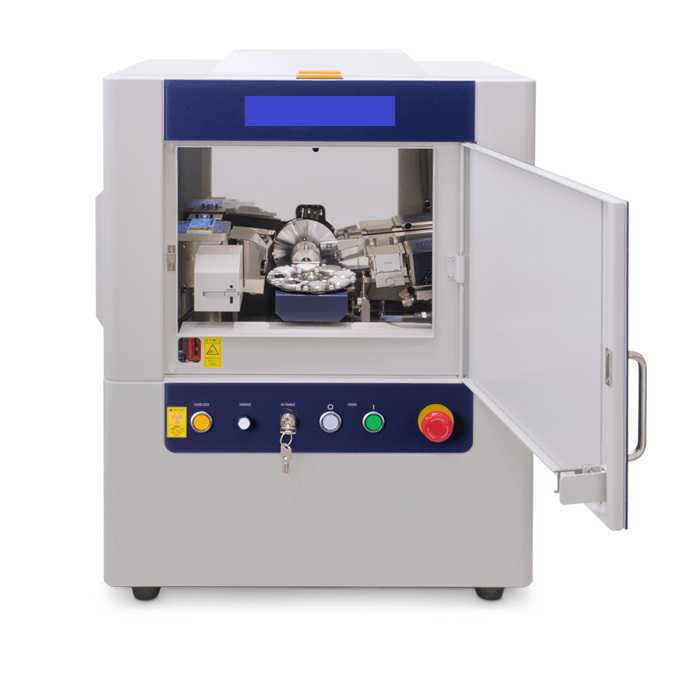

ZLS-3 vacuum concentrator
The ZLS series vacuum center concentrator has the function of quickly and safely evaporating water and organic solvents from the sample. The processed sample can be conveniently used for various qualitative analysis - chemical, biochemical, biological analysis, immunoscreening, food safety, residue analysis, etc. Suitable for immunoglobulin concentration, drug metabolite concentration, SPE solid phase extraction, pre-treatment and post-treatment. liquid chromatography, ADMET/toxicology, polymer chemistry, DNA/RNA purification and concentration, oligomerization, forensic/drug abuse testing, universal laboratory concn.
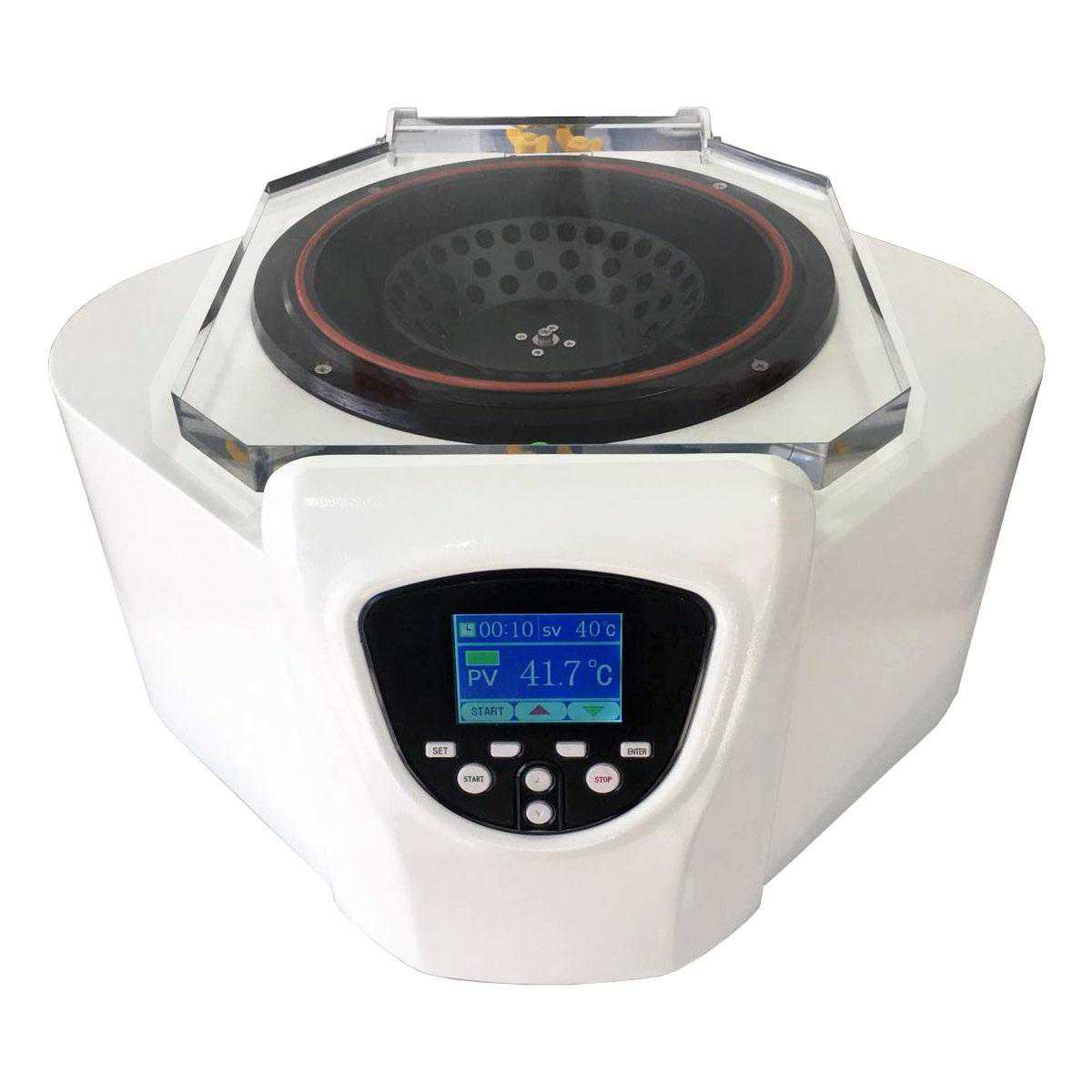

Transmission electron microscope Thermo Scientific TALOS F200i
Thermo Scientific Talos F200i (S)TEM 20-200 kV dala emissiyasi (skanerlash) uzatuvchi elektron mikroskopi bo'lib, o'zining xarakteristikalari va unumdorligi jihatidan juda ko'p namunalar va materialshunoslik ilovalari uchun noyobdir. X-Twin’ning maksimal qo‘llash moslashuvchanligi uchun standart qutb oralig‘i takrorlanadigan elektron ustun bilan birgalikda yuqori aniqlikdagi 2D va 3D xarakteristikalari, dinamik in situ kuzatishlar va diffraktsiya ilovalari uchun eshikni ochadi.
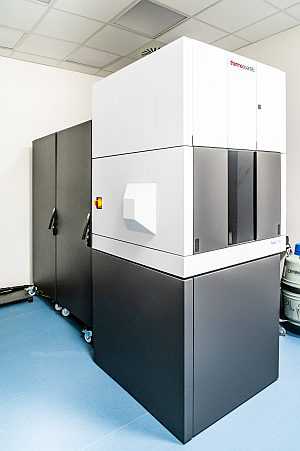

Research fluorescence microscope M-Shot MF 43-N
The MF43-N is the latest research-grade fluorescence microscope developed by Mshot, with the same performance as the Olympus BX43. The microscope uses a high-quality optical system with maximum compatibility with infinity optics and six fluorescent filters. At the same time, the microscope can be extended to several observation methods: phase contrast, dark field, polarization and DIC. Compatible with microscope electric stage and device. The light intensity control controls the brightness and eliminates the light intensity adjustment when switching the zoom. The microscope is routinely used for laboratory and clinical microscopy, especially for FISH, FRET and CTC
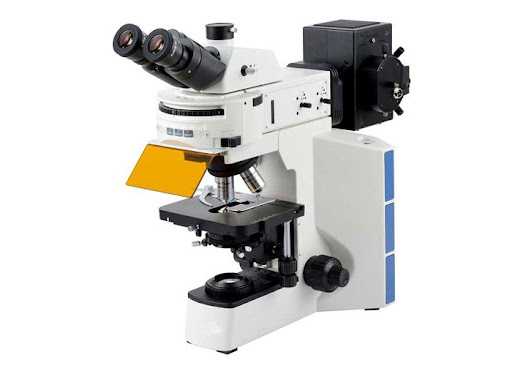

Photocor Compact particle size analyzer
The Photocor Compact particle size analyzer is an instrument for measuring particle size and molecular weight. The working principle of Photocor Compact is based on the dynamic light scattering method. The instrument complies with the international particle size measurement standard ISO 22412:2008.
Particle size measurement is carried out at an angle of 90 degrees. A 160 degree backscatter module is available as an option. This option allows particle size measurements in concentrated and opaque systems.
Due to the macro language built into the software, it is possible to automate the measurement process. The design of the cell compartment and the wide range of adapters allow the use of a variety of cylindrical and square cells.
Device features
- Measurement of nanoparticle sizes by dynamic light scattering. Absolute measuring method without pre-calibration.
- Ability to measure particle sizes in concentrated and opaque systems.
- High measurement speed and good reproducibility of measurement results.
- Easy sample preparation, small sample volume. Possibility to use various square and cylindrical cuvettes, as well as micro flow cuvettes.
- Highly sensitive photon counting system based on an avalanche photodiode.
- Precision temperature control of the cuvette; programmable heating and cooling rates.
- USB interface provides easy connection to any computer, including a laptop.


Sunlight Simulation
Solar simulator (artificial sun)
This is a device that provides lighting close to natural sunlight. The purpose of the solar power simulator is to provide a controlled internal test setup in a laboratory environment. It can be used to test any photosensitive process or material, including solar cells, sunscreen, cosmetics, plastics, aerospace materials, skin cancer, bioluminescence, etc. Photosynthesis, water purification, crude oil degradation, and free radical generation. Solar simulators are used in many areas of research such as photobiology, photooxidation, photodegradation, photovoltaics, and photocatalysis.
Solar simulators are used to recreate "natural" solar radiation in the laboratory to test the photovoltaic properties of devices and their quality.
Beam collimation and light uniformity, along with spectral matching, are the main characteristics of a radiation source. The SS1000 instruments are suitable for all types of solar cells and meet all their optical requirements, and are also suitable for large area samples.
Functions:
- Class A spectral compatibility;
- Stability of optical radiation < 0.5%;
- Built-in timer to control lamp life;
- Automatic shutdown control;
- Vertical and horizontal arrangement.
Parameter value units:
- Spectral compatibility 0.75 - 1.25 (AM1.5G);
- Lighting 1200 W/m2;
- Illuminated area 150 x 150 mm;
- Spatial illumination uniformity < 2%;
- Radiation intensity stability < 2%;
- Beam parallelism ±4 (half angle) ⁰.




Shimadzu AG-X Plus (20 kN)
The AG-Xplus series testing machines are universal tensile testing machines for physical and mechanical testing of various materials. The machines are used to determine the tensile strength, compressive strength, Young's modulus and various physical and mechanical properties of polymer and polymer nanocomposite materials. The equipment is simple and reliable, excellent performance characteristics allow accurate mechanical testing.
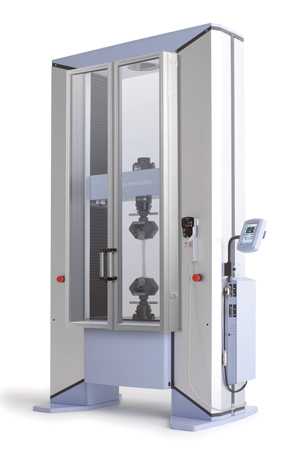

Solar Simulator IEC/JIS/ASTM, 450 W Xenon, 2 x 2
Solar Simulator IEC/JIS/ASTM, 450 W Xenon, 2 x 2 is used in the generation of solar spectra, which is necessary for the evaluation of the Volt-Ampere characteristic of solar cells. The 94023A is the Sol3A Class AAA Solar Simulator with a 450 Watt Xenon source and 2 x 2 in. illuminated area. All Oriel Sol3A simulators are certified to IEC 60904-9 Edition 2 (2007), JIS C 8912, and ASTM E 927-05 standards for Spectral Match, Non-Uniformity of Irradiance, and Temporal Instability of Irradiance. The Oriel Sol3A simulators all use a single lamp design to meet all three performance criteria without compromising the 1 Sun output power, providing true Class AAA performance. A Variable aperture accessory provides user the ability to vary the illumination on Sol3A simulators without adjusting the power supply. The range of attenuation is infinitely variable from 0.1 - 1Sun. The Oriel Sol3A uses a black non-reflective finish to minimize stray light and incorporates captive screws for all panels requiring user access to facilitate lamp replacement, alignment, and filter changes. Safety interlocks prevent inadvertent exposure to UV light.
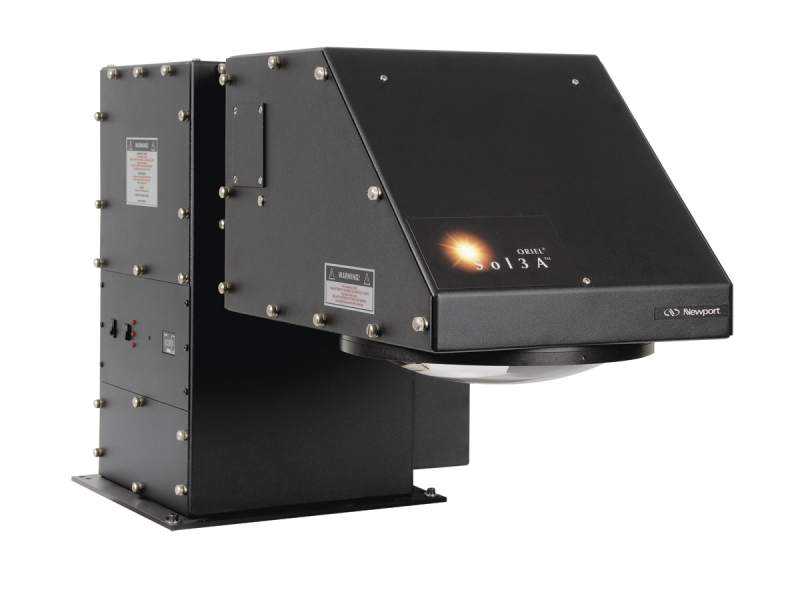

Media

Young Scientists Alumni Reunion 2022

The seedlings were planted as part of the national project "Green Land"

Uzbek scientists on a scientific internship at Tottori University, Japan

International cooperation meetings held within InnoWeek.uz - 2022

"Lesson of Independence" was held at school No. 171 in Tashkent

The week of "Scientific developments and innovative products of the tax and customs spheres and technical regulation"

Young Scientists Alumni Reunion 2022

The seedlings were planted as part of the national project "Green Land"

Uzbek scientists on a scientific internship at Tottori University, Japan

International cooperation meetings held within InnoWeek.uz - 2022

"Lesson of Independence" was held at school No. 171 in Tashkent

The week of "Scientific developments and innovative products of the tax and customs spheres and technical regulation"

Young Scientists Alumni Reunion 2022

The seedlings were planted as part of the national project "Green Land"

Uzbek scientists on a scientific internship at Tottori University, Japan
Statistics on the direction of young scientists for scientific internships
Young Scientists
Financing of scientific internships for young scientists in leading foreign scientific organizations

Countries
Number of foreign countries sent for scientific internships

Directions
Directions for young scientists aimed at scientific internships
Communications
Communications established during the scientific internship
Association of young scientists “Innofund”
All the students
"Slovak university of agriculture in Nitra" universiteti
Jalilov Sirojiddin, Ruziyev Dilmurod, Zokirov Ilhomjon va Jalilova Xumora

Janubiy Koreyadagi Jeju Milliy Universitetining "Plasma Applications" laboratoriyasi
Matyakubov Nosir

Buyuk Britaniyaning Lester universiteti
Maxmudov Firuz

Rossiya Federatsiyasining I.Repin nomidagi Sankt-Peterburg badiiy akademiyasi
Axmedxоdjayeva Umida va Zaynutdinova Zuxra

Turkiya Respublikasining Afyon Kojatepe Universiteti
Mahammadiyev Jasur Nasirillo o‘g‘li

Latviya tabiiy fanlar va texnologiyalar universitetining "Veterinariya meditsinasi" fakultetiga qarshli hayvonlar klinikalasi
Abduraxmanova Nafisa va Yulchiyev Jasurbek
Useful links
Contacts
The address:
100174, Tashkent, st. University, 7
Transport:
“Beruniy” metro station, “Beruniy” bus station for 11, 28, 31, 78, 88, 116 buses
Telephone:
E-mail:
info@innofund.uzWorking days and hours:
Reception days:
Copyright © 2022 Fund funding for science and support innovation
All materials on this site are available under the following license: Creative Commons Attribution 4.0 International
If you find an error in the text, select it and press “Ctrl + Enter” to notify the administration








